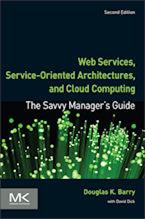Architecture with Existing Data Sources
Object databases can be a way of staging data for your C++ or Java applications. This example shows two existing data sources that have data in non-object formats (flat file and relational, for example). The non-object data is mapped into object models and stored in the object database. This object database now holds some part of the existing data and perhaps some of its own data that did not exist previously. At some later time, the object application can obtain this data and tap the high performance that an object database provides. This performance is a result of having the same model in the object database as is used by the object application. See one model to reduce development and maintenance costs.
This architecture can be applied to the middle-tier of a website. See middle-tier architecture.

More Detail on Architecture with Existing Data Sources
Context for Architecture with Existing Data Sources
Related Articles for Architecture with Existing Data Sources
Author
Douglas K Barry
Principal
You may use this material for your work or classes. Reprint Policy. Be sure to check the menu at the left for other articles available on this site.
The Savvy Manager's Guide
Douglas K Barry is also the author of a book that explains Web Services, service-oriented architecture, and Cloud Computing in an easy-to-understand, non-technical manner.
Web Services, Service-Oriented Architectures, and Cloud Computing: The Savvy Manager's Guide (Second Edition)
by Douglas K Barry with David Dick
This is a guide for the savvy manager who wants to capitalize on the wave of change that is occurring with Web Services, service-oriented architecture, and—more recently—Cloud Computing. The changes wrought by these technologies will require both a basic grasp of the technologies and an effective way to deal with how these changes will affect the people who build and use the systems in our organizations. This book covers both issues. Managers at all levels of all organizations must be aware of both the changes that we are now seeing and ways to deal with issues created by those changes.

